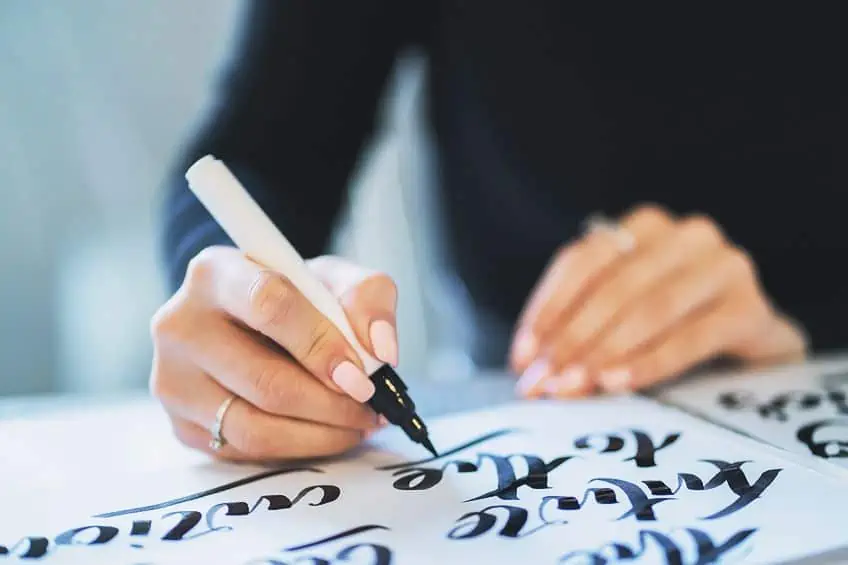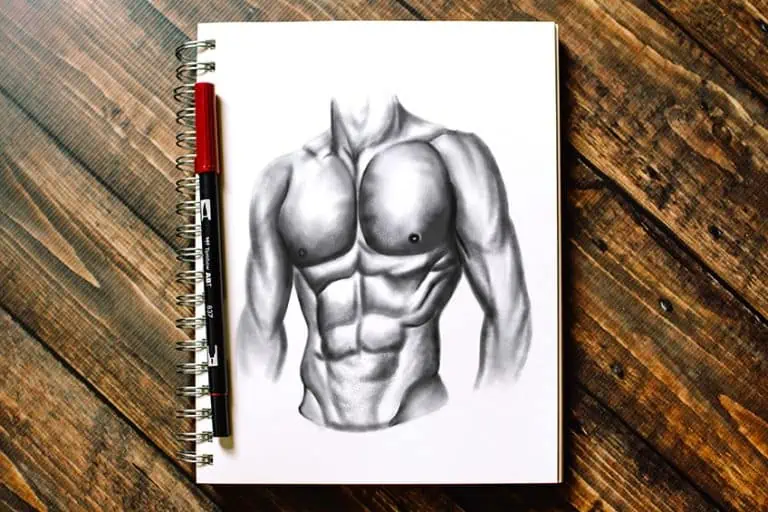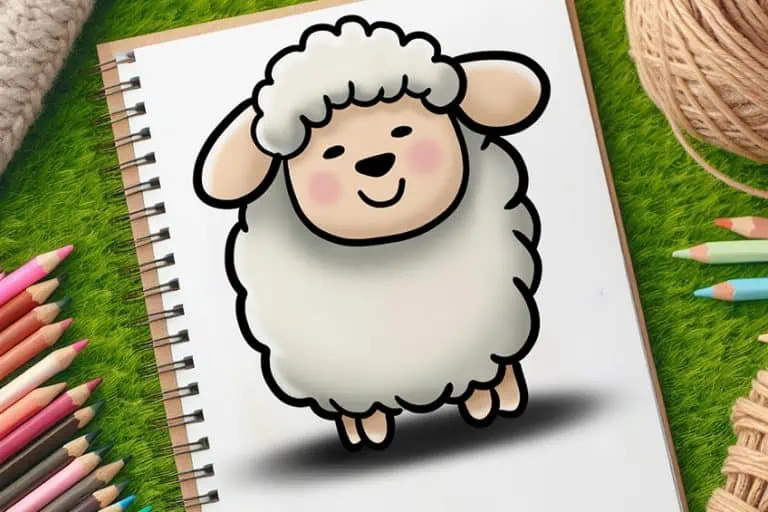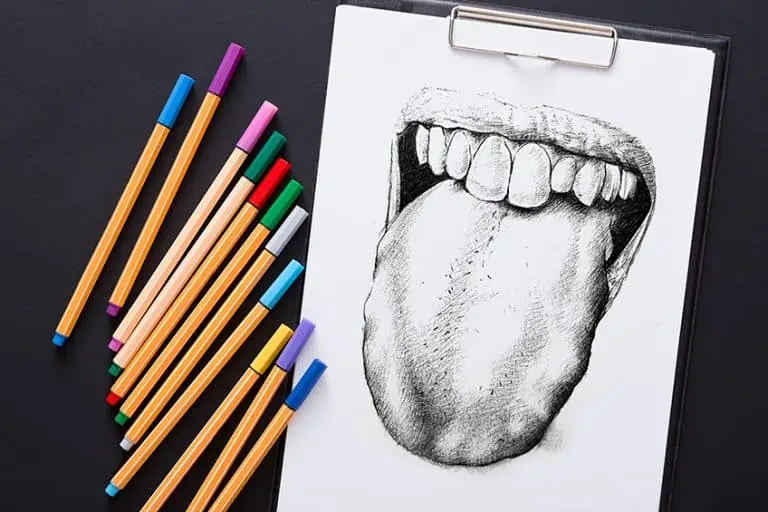What Is Calligraphy? – Learn the Different Styles of Calligraphy
This post may contain affiliate links. We may earn a small commission from purchases made through them, at no additional cost to you.
What is calligraphy used for and are there different types of calligraphy? There are many different calligraphy styles, and each one has unique characteristics and a distinct history. In this article, we will find out all there is to know about this fascinating manner of writing, as well as answer your questions on the topic, such as “how is calligraphy used as an art form?”.
Table of Contents
What Is Calligraphy Used For?
Calligraphy is the creative practice of creating beautiful letter designs by hand and placing them in such a way that they imbue words with harmony, integrity, ancestry, and rhythm. Integrity, according to this definition, indicates excellent proportions and aesthetics of the symbols and letters. Harmony is the appealing connection between the various characters, individual letters, and words.
Ancestry in this context refers to the continued use of materials, letter shapes, and techniques used by calligraphers to preserve their heritage.

Rhythm is an intentional repetition in calligraphy that produces the sensation of patterns in the viewer’s eyes. Any one of these factors by itself does not make up a real calligraphic technique; it only happens when they are all present together that the technique resembles calligraphy.
The History of Calligraphy
The art of calligraphy has an extensive tradition that spans many civilizations and regions. The precise beginnings of calligraphy are difficult to determine because many kinds of calligraphy have arisen individually throughout history throughout various regions of the world. Calligraphy has been practiced in China for over 4,000 years. The first recorded instance of Chinese calligraphy was utilized on oracle bones during the Shang Dynasty. Chinese calligraphy has had a considerable influence on calligraphy development in various nations, such as Korea and Japan.
Islamic calligraphy is intimately related to Islamic architecture and art and developed in the Middle East.

The Arabic alphabet, which evolved from the Aramaic script and later provided the basis for the Ottoman Turkish, Persian, and Urdu scripts, shaped the development of Islamic calligraphy. Calligraphy’s Western legacy may be dated back to ancient Greece and Rome, where it had been utilized to produce manuscripts and adorn significant records. The Roman alphabet and the dissemination of Christianity throughout Europe were influential in shaping the development of Western calligraphy.
The Development of Calligraphy
Calligraphy developed and evolved over the years in various parts of the world, with styles and techniques arising in response to religious, cultural, and artistic influences. The gradual development of calligraphy was intrinsically linked to the advancement of writing tools. Calligraphers employed a range of writing tools in ancient times, including animal hairbrushes, reed pens, and even chisels to carve letters into metal or stone. As calligraphy traversed across the globe, it adopted various regional styles. Chinese calligraphy, for instance, evolved into five distinct styles: regular script, clerical writing, seal script, running script, and cursive script, each of which has its own distinct qualities.
Many religious traditions, such as Judaism, Islam, Christianity, Buddhism, and Hinduism, value calligraphy. Religious calligraphy, which may be highly ornamental or abstract, will often include passages from religious prayers and texts.

The introduction of printing had an enormous impact on the evolution of calligraphy since it enabled the mass reproduction of calligraphic works. Printed calligraphy flourished in the Islamic era, where it was typically employed to create illuminated books and embellish architecture. Calligraphy has evolved and adapted to shifting societal and technological developments in the modern period. New techniques and technologies have arisen, such as laser cutting and digital calligraphy, and calligraphy continues to be utilized in a number of contexts, such as branding, graphic design, and advertising.
Important Calligraphers
There are a few notable figures in the history of calligraphy worth mentioning. Each of these calligraphers brought something new to the art form and both figuratively and literally left their mark in the world of calligraphy. Let us take a look at several of these influential calligraphers below.
Wang Xizhi (303 – 361 CE)
| Name | Wang Xizhi |
| Nationality | Chinese |
| Date of Birth | c. 303 CE |
| Date of Death | c. 361 CE |
| Place of Birth | Langya Commandery, China |
It is stated that even during Wang’s lifetime, a handful of his calligraphy characters or his signature were highly valued. Throughout generations, aspiring practitioners of calligraphy, China’s most basic yet greatest art form, have reproduced and maintained traces of his distinctive style. The Lantingxu, which recounted a renowned assembly of 42 notable writers at the Spring Purification Festival of 353 CE, who gathered to create poems while enjoying the company of fellow poets and wine, is the most famous example of his writing. Wang’s writing was created in the running script style, which has since become the benchmark for that type of calligraphy. Despite the fact that his calligraphy was admired and collected from an early age, very few original works of Xizhi have survived, and those that remain are notes and letters.
Because real handwritten samples of Wang Xizhi’s calligraphy were scarce even in Tang times, copies proliferated both genuine reproductions as well as many forgeries.
Ibn Muqla (885 – 940 CE)
| Name | Ibn Muqla |
| Nationality | Iraqi |
| Date of Birth | c. 885 CE |
| Date of Death | 20 July 940 CE |
| Place of Birth | Baghdad, Abbasid Caliphate |
Ibn Muqla was a famous calligrapher from Baghdad and the creator of the thuluth style. In addition to thuluth, he created five other calligraphic styles, including naskh, a fluid cursive script that eventually replaced kūfi as the dominant script for delivering the sacred Koran. Naskh is a relatively easy-to-read font that is still in use in printing today. Ibn Muqla was regarded as a “prophet of calligraphy; it had been poured upon the palm of his hand, as it was made known to the bees how to make their honey cells hexagonal”.
He is regarded as the designer of the “proportioned script” style, which was developed by the 11th-century Persian scribe Ibn al-Bawwab. Today, none of Ibn Muqla’s works still exist; his creative output is only known from other sources, such as Ibn al-Nadim.
Al-Ghazali (1058 – 1111)
| Name | Al-Ghazali |
| Nationality | Iranian |
| Date of Birth | 1058 |
| Date of Death | 19 December 1111 |
| Place of Birth | Tous, Iran |
Al-Ghazali was an Islamic philosopher, theologian, and calligrapher. He is most widely known for his works pertaining to Islamic theology, philosophy, and jurisprudence, but he also made significant contributions to Islamic calligraphy development. He excelled at the Naskh script, a cursive type of Arabic calligraphy often employed for transcribing the Quran and other holy texts. He is well-known for his intricate calligraphic works, which frequently featured phrases from the Quran and other holy literature. The Al-Ghazali manuscript, a stunning example of Islamic calligraphy, is one of his finest calligraphic works.
The manuscript contains excerpts from Al-Ghazali’s classic work The Revival of the Religious Sciences and is known for its elaborate decorations and excellent calligraphy.

Al-Ghazali considered calligraphy to be a significant spiritual exercise and a way to demonstrate allegiance to God. “Calligraphy is the soul’s geometry”, he reportedly said, “and pen art is too the heart’s art”. Today, Al-Ghazali is acknowledged as one of the most significant individuals in Islamic history, and his calligraphy continues to influence calligraphers worldwide.
Styles of Calligraphy
Since the dawn of civilization, each new culture has developed its own particular calligraphic style, which has always resulted from a combination of practical requirements and artistic inclinations. They all employed different techniques and tools. Calligraphers are well aware of the works of their predecessors, and it plays an important role in modern calligraphy, which is formed by a lengthy and imaginative tradition. Indeed, mimicking historical handwriting is a popular and well-accepted approach to gaining calligraphic success.
Western Style Calligraphy
Western calligraphy started in the 10th century and is continuously evolving to the present. This renowned style, known for its rigid rules and geometric patterns, is a significant representation of calligraphic art. The Latin alphabet, which experienced multiple radical alterations over the centuries as governing dynasties swapped places, is the most identifiable application of Western lettering. The Renaissance humanist minuscule, in addition to the 17th-century Batarde as well as the English script, were major developments in this style.
Different forms of calligraphy necessitate the use of different writing instruments. Western calligraphy tools have traditionally included a round-nipped or flat-tipped pen, water-based ink, a brush, and high-quality paper.
Eastern Asian Style Calligraphy
This lettering style includes calligraphy from Japan, China, and Korea. Every kingdom that ruled these areas had its unique calligraphy expertise and visuals. This style is clearly identifiable since it is easy to recognize Eastern symbols that serve the purpose of complete words. Their written works are significantly shorter than those found in Western territories. Eastern Asian style calligraphy is regarded as a valuable heritage in its own countries, and each makes every effort to ensure that the indigenous calligraphic styles are properly preserved.
In addition to traditional writing instruments, Eastern calligraphers employ paperweights and desk pads.

Southern Asian Style Calligraphy
This style collection includes practices arising from the areas of Nepal, India, and Tibet. These texts were widely employed for numerous Buddhist and secular purposes and could be discovered being used in a variety of instances, ranging from Dalai Lama letters to prayer wheels. Works of Southern Asian style Calligraphy can be considered some of the oldest ancient lettering techniques ever found, with some instances dating as far back as stone inscriptions.
The most significant of the three was Indian calligraphy, which employed numerous unusual processes throughout the years of its existence, including smoke-treated palm fronds, burnt mud, copper, and birch barks.
Islamic Style Calligraphy
This style is a fundamental component of art in Islam. It employs distinctive geometric designs, some of the finest examples of which can be observed on mosque walls. Many believe Islamic Calligraphy to be the most exquisite form of lettering, and it has grown alongside the growth of the faith and the Arabic language. It should be emphasized that calligraphy is regarded as the highest form of artistic expression by Muslims because it is regarded as the most effective means for interacting with the spiritual realm. The Ottoman Era is typically regarded as the pinnacle of Islamic Calligraphy expansion because very few elements of calligraphy have altered since then, particularly in more conservative sectors of society.
However, various changes were made to traditional letters in modern times, which produced distinct contemporary Arabic calligraphy.
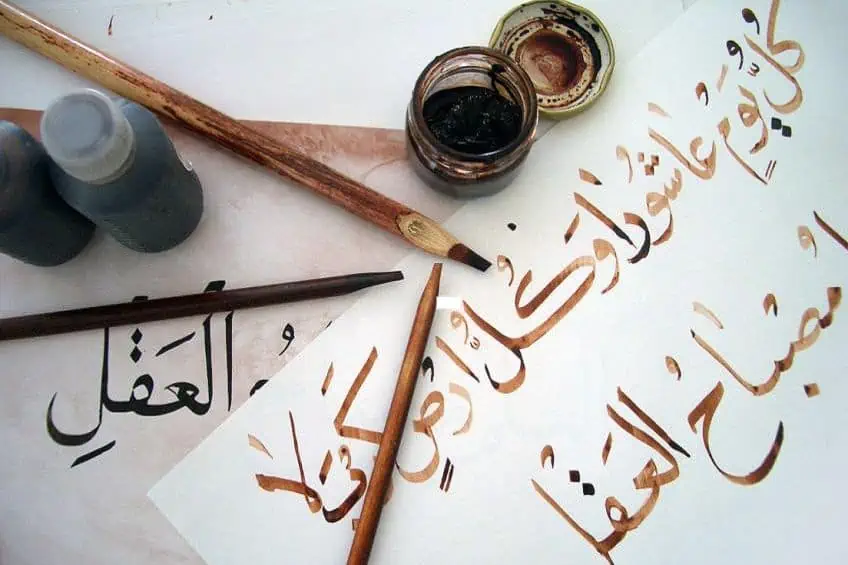
Tools and Materials
A calligrapher’s primary tools are the brush and the pen. Pens used for calligraphy come in a range of round, flat, or pointed nibs. Multi-nibbed pens can be used for several decorative applications. However, calligraphy works have also been produced using ballpoint and felt-tip pens, though without the use of angled lines. Some calligraphy styles, for example, Gothic writing, necessitate the use of a stub nib pen.
The ink used for calligraphy writing is often water-based and far less viscous than the ink normally used in printing.
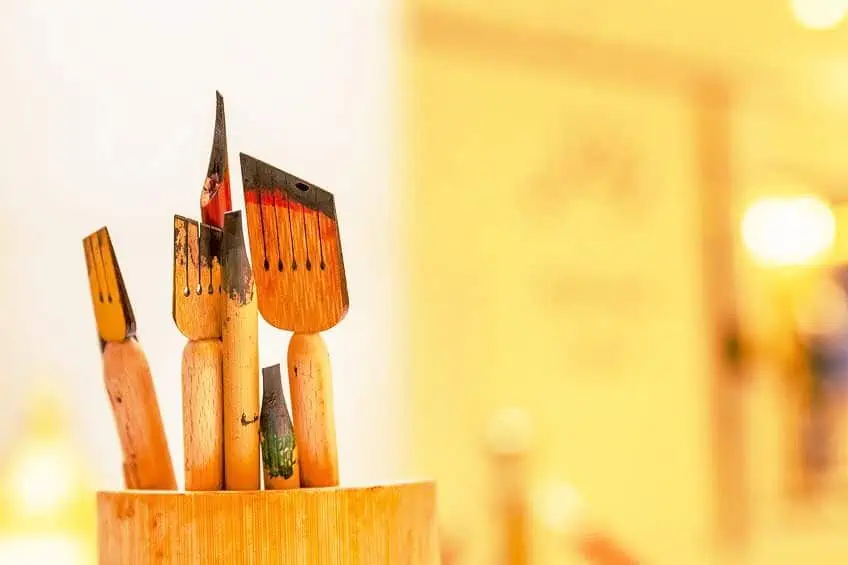
Specialized paper with high ink absorption and consistent texture results in cleaner lines. Templates and light boxes are used to produce clean lines without distracting pencil traces. However, vellum or parchment is also commonly used, as any imperfections can be removed using a knife, and a lightbox is not required.
Learning Calligraphy
Now that you know a bit more about the history and styles of calligraphy, maybe you would like to give it a try for yourself. We have mentioned a few of the various writing tools and materials above, but if you are just starting off, we suggest beginning with a fountain pen, as you are able to write and improve your technique without having to continuously dip into an ink well. Here are a few more useful tips.
Tips for Starting Off
Calligraphy nibs are available in a variety of widths and can be flat or round. For flowing letter styles with cursive details, round tips are ideal. Chisel tips, though, work well in Gothic and Old English styles because they produce thin upward and thick downward strokes. Smooth paper is the greatest surface for calligraphy. Rougher paper can cause your letters to bleed, whereas using smooth cartridge paper results in clear lines. Calligraphy requires a lot of focus, therefore decent lighting and a comfortable chair are essential. Many individuals also vouch for drawing boards since they can be angled to achieve the ideal position.
A couple of sheets of paper or a drawing pad can be placed beneath the piece you’re working on to provide a smooth work surface. This will keep the roughness and textures of the wood of your desk from messing with your work.
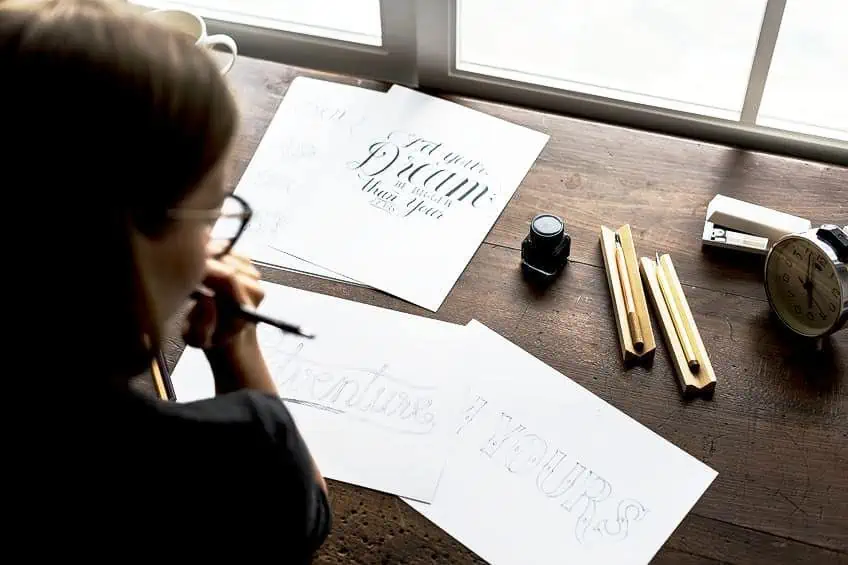
Common Mistakes to Avoid
In calligraphy, proper hand positioning is critical. Uneven strokes and unsteady lines could result from holding the writing instrument too tightly or from holding it at the wrong angle. A gentle touch is required for calligraphy, and using too much pressure could end up resulting in thick, inconsistent lines, so maintaining an even amount of pressure throughout the stroke is key. While striving for excellence in calligraphy is important, it is just as essential to accept imperfection while enjoying the learning process.
Overemphasis on perfection can be frustrating and could actually hinder your growth.
Common Applications
Calligraphy is an adaptable form of art that has been used in various professions throughout history. It is commonly used in art, both as a distinct art form and as a decorative feature in other artworks. Calligraphy is also employed in advertising, graphic design, and branding. Traditionally, calligraphy was used when creating books, manuscripts, and other written works. Calligraphy is a popular option for invitations to weddings, table cards, and other event-related objects.
Calligraphy can be used in any everyday situation where you want to add a touch of class and elegance to your project.

The skill of creating aesthetically pleasing forms of writing is one that many cultures through time have strived to attain. Therefore, the art of calligraphy arose independently from many regions of the world, each with its own distinct styles and traditions. From these unconnected sources, calligraphy developed into various unique calligraphy styles, such as the Islamic style of calligraphy, the Asian style, and the Western Old English and Gothic styles. It continues to be a popular form of art, with novel types of calligraphy still emerging and developing in the modern era.
Frequently Asked Questions
What Is Calligraphy Used For?
Throughout the centuries, calligraphy has proven to have multiple uses for the various nations that independently developed their distinct calligraphy styles. In Islam, for example, calligraphy is a very prominent feature of Islamic architecture. In Asia, calligraphy was used for everything from religious texts to formal governmental documentation.
How Is Calligraphy Used as an Art Form?
Calligraphy is regarded to be so beautiful that it is often presented unaccompanied by other visual elements and is purely enjoyed for its aesthetics and message. It is also used to adorn other artworks which already have an image. It is regarded as a stand-alone art form, as it embodies various artistic principles such as harmony, line, rhythm, and balance, among others.
Matthew Matthysen is a multidisciplinary artist. He completed his fine art degree, majoring in History of Art and Contemporary Drawing Practice at the University of Witwatersrand, South Africa. Before joining acrylgiessen In 2020, Matthew worked part-time as an art teacher at Reddford Blue Hills High school. Matthew creates drawing and painting tutorials for acrylgiessen and captures them not only photographically and in written form. He also records the creation of his works in his own creative studio as in video format, from which later with a voiceover and a video editor also drawing tutorials for the Youtube channel of acrylgiessen are created.
Learn more about Matthew Matthysen and about acrylgiessen.
